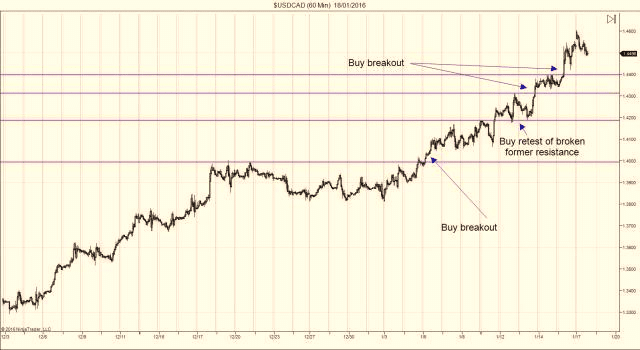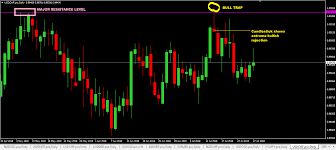Every person in the Forex trading world has the ambition of finding a system that produces consistent results through and through. But there is no such thing and the search for the non-existent thing leaves us disappointed and frustrated. But if you can find out where the problem lies, then you can unlock the gateway to winning a Forex trading system firmly within your grasp.
And the problem typically lies in the failure when it comes to understanding market types.
Market type attributes to the different stages or states that a market flows through. And if you can define the market time it can immediately become relatively convenient to design a system that provides an edge in that specific market.

Let’s take a look at the most important market types that every trader should consider when trading Forex along with systems that best work with each of these market types:
Bull Normal
Bull normal is an upward moving market that has a steady movement behind it and is generally bought on dips with price action presenting the typical “staircase” pattern that we obtain when we witness higher highs, higher lows, higher highs, etc. This market type is characterized by steady advance to the upside followed by brief retracement and consolidation before further upside becomes apparent.
System- buy and hold: In this type of market, you can just buy and hold with a trailing stop loss. If the market type does not alter this can be a highly efficient system or approach.
Bull Volatile
Bull volatile is an upward moving market that has a fast pace accelerating momentum behind it and features large bullish candles. This market is characterised by its explosive movement providing very little retracement and only particularly brief suspensions that only register on the lower time frames.
System- Long Swing Trading
This type of market is ideal for more active trading techniques and profit targets are the order of the day in this market type. What you must do is look for a pullback, a reversal, and then find a logical profit-taking objective on the long side. You will definitely want to consider dropping to a lower time frame to enhance the risk/reward on the entry.
Sideways Quiet
Sideways quiet is a ranging market type which is very low volume and typically directionless. Nevertheless, the market sometimes features a very slight bullish or bearish drift. Sideways quiet market is characterised by its irregular and very shallow trading range and is usually comprises of many short candles that indicate movement deprivation per session.
System- Breakout
Sideways quiet market can be traded in two ways at least. You can move a lower timeframe and utilise a band trading system. This process can be very profitable if the pair stays in this stage of the market for some time. You will come across a ton of 2:1 and 3:1 risk/reward trades you can pick off in a row. Sideways quiet market often results in a strong breakout and trend. So instead of trading the sideways quiet, you can shift your monitoring to a new market type by trading breakouts. Do remember that a breakout approach is not for the fainthearted.

Sideways Volatile
Sideways volatile is a ranging market which is very low volume and is usually directionless. Nevertheless, the market can also feature a bearish drift or a slight bullish drift. This market is characterised by its very large rotation is between areas of support and resistance. Similar to sideways quiet, the range is lacking in direction but is of a much larger scale because of the volume behind the moves.
System- Band Trading
This type of market can be targeted with a banned trading method. What you can do is once the price touches an outer band, look for a reversal of a support and resistance level to give you a good risk/reward on your trade.
Bear Normal
Bear normal is a downward moving market that has study momentum behind it. It is generally solid on rallies, with price action showing the typical “down the stairs” pattern that we witness when we see lower lows, lower highs, lower lows. Bear normal market is characterised by steady advances the downside followed by brief retracement higher and consolidation before further downside becomes apparent.
System- sell and hold
The opposite of bull normal market is a bear normal markets. Sell short and hold with a trailing stop to enable capturing the majority of the move.
Bear Volatile
Bear volatile is a downward moving market that has a fast-paced accelerating momentum behind it and it also features large bearish candles. This market is characterised by its explosive movement providing very little retracement and only particularly brief breaks that only register on the lower time frames.
System- short swing trading
The opposite of a bull volatile market is a bear volatile market. In this type of market, you can try a short swing trading approach with a profit target that gives you a good risk to reward on your trade.
How to Identify the Market Types In Forex?
If you dedicate yourself and put in enough of screen time you will soon become good at identifying the different market types. Some of the basic things to remain aware of include the following:
- If the market is going up quietly, it is a bull normal market time.
- If the market is going down, it’s a bear normal.
- If the market is in rapid ascent or rapid descent, it’s a volatile market.
- If the price is oscillating between two support and resistance levels, it’s a sideways market.
- If the sideways range is void, it’s sideways volatile.
- If the sideways range is tight, the market type is sideways quiet.
Final Thoughts
If you can remember these basics then you will be able to not only identify the current market type but also detect if the market type has altered. Along with that if you can remember the different approaches and systems that work best with the distinct markets; you will have no trouble trading.




